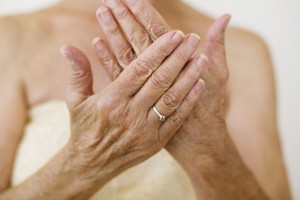Best Posture When Working from Home
 In the present day, working from home has become a norm especially after the emergence of the Covid-19 pandemic. It is a new lifestyle that has called for everyone to get acclimatized to, health safety. This new orientation has both an emotional and physical toll on those who are not used to working from home. Lack of an office layout substantially affects the pressure imposed on the back, due to wrong postures.
In the present day, working from home has become a norm especially after the emergence of the Covid-19 pandemic. It is a new lifestyle that has called for everyone to get acclimatized to, health safety. This new orientation has both an emotional and physical toll on those who are not used to working from home. Lack of an office layout substantially affects the pressure imposed on the back, due to wrong postures.
You might frequently find yourself slouching over your laptop or phone for a couple of hours. Prolonged engagement to the screen especially while in the wrong posture, is a hazard to your muscles and joints. Eventually, your body adopts this wrong posture even when not using any gadget. Consequently, such a wrong posture has a cascading effect on the general well-being of the body and can cause serious medical conditions.
Effects Of Poor Posture
Maiming of the spine is one of the most common effects of poor posture. It is worth noting that the wearing out of the spine due to bad posture can lead to a herniated disc in the neck. Chiropractic is a credible remedy to a herniated neck disc since it is a condition that does not require surgery or invasive medication to be corrected. For the best results, chiropractic can be paired with several exercises as a treatment for a herniated neck disc.
Exercises For a Herniated Disc in The Neck
- Retraction of the shoulders
- Chin tuck
- Neck extensions
- Neck extensions while lifting the head
- Gentle rotation of the neck
Other effects of a bad posture are:
- Headaches and soreness in the back, neck, and shoulders
- Reduced agility
- Decreased stamina
- Difficulties in breathing
Luckily, there are multiple changes that can be made as you work from home, to avoid suffering any of the above consequences of a bad posture.
What Should You Do to Attain the Right Posture?
Below are several positioning adjustments that you can implement:
- While using your laptop, keep away from sitting or lying down on the bed or sofa.
- If possible, use a desk while sitting on a comfortable chair.
- Keep your head at least one foot away from the screen.
- Use a headset when receiving calls, to avoid causing tension on the neck.
- Take regular breaks and walk around before sitting down once more.
How Should the Body Be Positioned While Sitting at A Desk?
- The feet should touch the floor.
- The legs should not be crossed.
- The elbows should be near the body, bending forward at an angle of 90 degrees.
- The back should be entirely supported and vertically lying against the backrest of the chair.
- The thighs and hips should be held up and positioned parallel to the floor.
- The shoulders should be loosened.
Benefits Of a Good Posture While Working from Home
- Enhanced blood circulation.
- Reduced injuries to ligaments and joints.
- Better balance and less possibility of falls.
- Reduced fatigue, migraines, and backaches.
- Better breathing due to the lungs’ ability to expand properly.
As you get used to working from home, you should consider establishing an office set up in your house that resembles your station at the office. You can also install a yoga app on your phone that will teach you some moves to improve your posture while still seated at your desk. In addition to this, remember to stay hydrated and maintain proper sleeping patterns.
Shockwave Therapy for Plantar Fasciitis
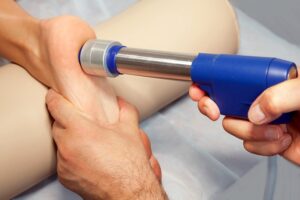 Plantar Fasciitis is a foot disease and it is the most common cause of heel pain. Patients with Plantar Fasciitis go through extreme pain, usually in the morning or after a period without walking. It is estimated to affect 10% of adults, mostly those who fall between 40 and 60 years old and the younger group of habitual runners. Its prevalence has been reported to be higher in women than in men. Extracorporeal shock wave therapy has been widely used for decades as an alternative treatment option for Plantar Fasciitis.
Plantar Fasciitis is a foot disease and it is the most common cause of heel pain. Patients with Plantar Fasciitis go through extreme pain, usually in the morning or after a period without walking. It is estimated to affect 10% of adults, mostly those who fall between 40 and 60 years old and the younger group of habitual runners. Its prevalence has been reported to be higher in women than in men. Extracorporeal shock wave therapy has been widely used for decades as an alternative treatment option for Plantar Fasciitis.
Description of the intervention
Extracorporeal shock wave therapy (ESWT) has been proven to be effective and it is a widely preferred intervention due to:
- The quick recovery times caused by the stimulation of collagen production, which helps muscles and soft tissue structures to repair and heal faster. There is also the formation of new blood vessels in the area because the shock waves promote angiogenesis. The availability of more oxygen and nutrients help in the repair and healing process of the injuries.
- Its noninvasive nature – ESWT does not involve puncturing the skin or entering the body cavity, meaning there is no surgery needed.
- Pain reduction – Nociceptors are pain-sensing nerves and this intervention dulls them, making it more bearable for a patient.
- Suitability to the day-to-day life of patients – The intervention, popular for musculoskeletal, treatment has few latent complications and allows the patient to get back to normal routine faster.
How the intervention works
Shockwave therapy was first used in the intervention and management of Plantar Fasciitis in 1996. Several practitioners and investigators have published scientific studies and successful results after using shock wave intervention to treat Plantar Fasciitis. It is considered a safe treatment option with positive outcomes.
There are two types of ESWT; focused shock wave therapy and radial shock wave therapy. Focused shock wave therapy focuses on a specific spot, while radial shock wave therapy sends pulses around the site. There is a high-energy and low-energy form of shock wave treatment. They are, however, not linked to focused shock wave therapy and radial shock wave therapy because those are two different technologies.
Low-energy shock wave treatment is administered in a series of three or more therapies that have pain intensities ranging from none to mild pains. In distinction, high-energy shock wave treatments are administered in one session. They are usually painful and anaesthesia may be administered for the therapies.
A mechanical device is necessary to produce pressure pulses for both types of therapy. Focused shock wave therapy uses three different generator technologies; electrohydraulic, electromagnetic and acoustic waves. Radial shock wave therapy uses a new generation pneumatic machine and is administered to the skin directly.
Despite extracorporeal shock wave therapy being a bit expensive, it is has been proven to be quite effective in the management and treatment of Plantar Fasciitis. Patients may benefit from shock wave therapy because it is a reasonable and cheaper option than surgical intervention. Its potential side effects are also low, making it a safe treatment alternative to surgery.
What is Nerve (Neuropathic) Pain?
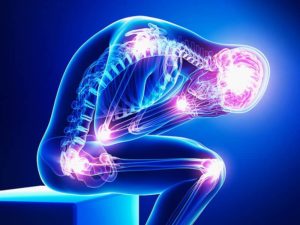 Neuropathic pain if a form of chronic pain condition that is accompanied by, or caused by an infection, disease, or injury. On the other hand, the condition cannot be attributed to any one single factor. Pain normally comes about due to an illness or injury. For instance, dropping a heavy item on your hand, leg, or foot will cause your nervous system to transmit pain signals immediately your body is hit by the item.
Neuropathic pain if a form of chronic pain condition that is accompanied by, or caused by an infection, disease, or injury. On the other hand, the condition cannot be attributed to any one single factor. Pain normally comes about due to an illness or injury. For instance, dropping a heavy item on your hand, leg, or foot will cause your nervous system to transmit pain signals immediately your body is hit by the item.
With nerve pain/pinched nerve pain, there’s no single injury or event that can be said to be behind the pain. What happens is that the body just begins to transmit pain signals to your body without being prompted. A person suffering from this condition is likely to routinely experience burning or shooting pain.
It’s a pain that can either come randomly or remain constant. You may also experience a loss of sensation or numbness in the affected area. With time, this condition may either start to improve or become worse.
Statistics indicate that one out of every three people in Australia suffers from chronic pain. Of this, every one out of five will suffer from neuropathic pain. A certain study estimated that about 10percent of the Australian population experiences a particular kind of neuropathic pain.
Neuropathic Pain Causes
The causes of this form of pain can be divided into:
I. Accidents
Neuropathic pain can be brought about by injuries to joints, muscles, or tissues. Similarly, problems in your hips, legs, and back, or injuries in these areas can also lead to long-term nerve damage. Even though the injury will begin to heal with time, the damage to your nerves cannot be reversed.
This may lead to you experiencing persistent pain for the next few years.
II. Infection
Infections are a popular cause of this condition. Individuals living with AIDS or HIV are highly likely to experience this kind of pain. It’s also possible for you to experience a stinging and unexplained pain when you have a syphilis infection. Long-term neuropathic pain may also be caused by shingles, brought about by a chickenpox outbreak.
III. Surgery
Phantom limb syndrome is an uncommon condition that tends to occur when your leg or arm gets amputated. In spite of losing a vital limb, the brain will still continue to assume that the pain signals are coming from the part that has already been amputated.
In reality, what will be happening is that the nerves located in this area will be misfiring, and in the process will start to transmit defective warning signs. Apart from your legs and arms, the phantom pain can also be felt in your ears, fingers, penis, and toes.
Symptoms of Nerve Pain/Pinched Nerve Pain
The symptoms experienced by each person are bound to vary. But all conditions tend to have popular symptoms that occur in many of its sufferers. In this case, the common symptoms include:
- Difficulty resting or sleeping
- Spontaneous pain
- A chronic sensation of being abnormal or unpleasant
- Stabbing, burning or shooting pain
- Loss of sleep
How to Manage Neuropathic Pain
This type of pain tends to manifest itself in the form of a long-lasting condition. It, therefore, doesn’t react well to modern types of treatment. While it may not be able to permanently get rid of the problem, a few lifestyle changes can help relieve the symptoms.
Massage, relaxation, and physical therapies can assist you to ease its symptoms. Therapies help the muscles to relax, and this, in turn, assists to reduce your nerve-related issues.
Hip Bursitis Remedies

Diagnosis
The diagnosis of this problem will always start with a history and physical examination. Physical examination helps determine the stiffness in the hip and whether you have a limp. Most patients notice the pain when climbing or descending stairs, but It is also essential to determine the other types of movements causing the pain. Some of the remedies to the condition include exercises, cortisone injection or anti-inflammatory medication. Patients can also try weight loss and using the right footwear for exercise activities.
Exercises for Hip Bursitis
Exercise is very successful in treating most of these conditions because they strengthen the tendons and the muscles surrounding the affected area. In most cases, tendons are the primary cause and not bursitis. It always helps to talk with a medical practitioner or with a physiotherapist. A good example is a physiotherapy North Shore. These professionals are experienced and will help you create an exercise program that does not increase the risk of injury. Most of these exercises aim at improving the strength with a focus on the pelvic region, gluteus Maximus and the lower back. Patients may require surgery if physical therapy does not solve the issue. Below are some of the exercises for hip bursitis.
Bridges: This exercise involves lying on your back with your knees bent and your legs flat on the floor. When still in that position, squeeze your butt and abs and lift the lower body part a little off the floor. You should not raise your lower body too high to avoid exerting too much pressure on your neck. Hold the position for 10 – 30 seconds and then lower the back to the floor. Try to repeat the procedure ten times. The benefit of this exercise is that it improves bursitis symptoms by engaging the hip flexors, hamstrings, quads and muscles.
Hip Press: For this exercise, you should have a therapy band around your thighs and lie on your back with bent knees and the feet flat on the floor. Try to exert resistance on the band for thirty seconds and repeat the exercise 10 times.
Standing buttock squeeze: This exercise involves standing in a straight posture with a few inches gap between your feet. Also, note that the feet should be flat facing forward and flat on the floor. Try using your heels to push the ground away without moving your feet and hold for thirty seconds, try repeating the exercise several times.
Treatment for Menieres Disease in London
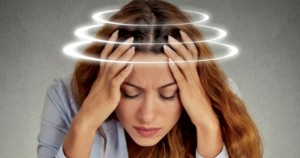 Menieres disease, also known as MD, is an inner-ear disorder that causes vertigo, a type of dizziness whereby the patient feels like they are spinning. The condition can also cause a feeling of fullness in the ear, ringing in the ears or hearing loss. It often affects one ear and the hearing loss can be permanent.
Menieres disease, also known as MD, is an inner-ear disorder that causes vertigo, a type of dizziness whereby the patient feels like they are spinning. The condition can also cause a feeling of fullness in the ear, ringing in the ears or hearing loss. It often affects one ear and the hearing loss can be permanent.
What are the symptoms of MD?
MD is a progressive disease, which means that it worsens over time. The disorder can start gradually with periods of hearing loss and Vertigo may develop later. In addition to the main symptoms, patients may experience trembling, rapid pulse and cold sweat, diarrhoea or nausea, blurry vision and anxiety. Attacks are often brief, lasting between 20 minutes and 24 hours.
The patient might get several attacks in a week. Sometimes these attacks might come months or years apart. Afterwards, the patient feels tired and needs to rest. As the condition progresses, the symptoms may change. Tinnitus and hearing loss may become constant. As a result, the patient may struggle with vision and balance issues instead of experiencing bouts of vertigo.
Causes of MD
The cause of this condition is not clear but likely involves environmental and genetic factors. Researchers have a number of theories explaining what can affect the fluid in the patient’s ear. These include:
- Migraine headaches
- Blow to the head
- Inherited tendency
- Viral infection
- Allergic reaction
- Autoimmune response (when the body’s defence system misfires and starts attacking healthy cells)
- Poor drainage (as a result of an abnormal structure or blockage in the ear)
Treatment of Meniere’s disease
Although there is no cure for this disorder, chiropractic offers an alternative way of managing and treating it. Patients diagnosed with Meniere’s disease in London can schedule an appointment with Neuroworks Chiropractic Clinic for chiropractic treatments. The treatments consist of chiropractic adjustments designed to help patients suffering from Meniere’s. The treatments are safe, non-invasive, drug-free and effective.
The vestibular rehabilitation programme teaches you how to retain your balance systems and gain stability. It’s designed to improve balance and mobility and can also cause an improvement in the patient’s quality of life as it helps them learn how to balance themselves.
What is VR (vestibular rehabilitation)?
VR is a specialised exercise-based programme designed to reduce dizziness-related problems and improve balance. Neuroworks will tailor a treatment programme to fit your specific needs, with the aim of producing the best results. When patients perform these exercises and manage to retain their balance, they will be able to cope with vertigo.
As you start improving, physical therapy will stop provoking dizziness, meaning that your chiropractor will prescribe more difficult to allow for further improvement. Studies reveal that patients who choose to undergo a tailored VR programme do better when compared to those who decide to do generic exercises. Patients with MD respond well to chiropractic care, making it an effective alternative treatment for those suffering from the disorder.
Cervical Radiculopathy (Back Pain)
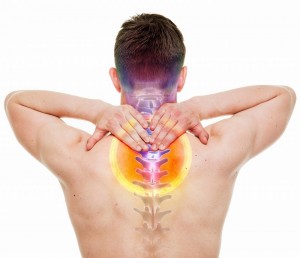 Back pain, clinically known as Cervical Radiculopathy is one of those common occurrence suffered by many. It affects persons of all ages and can be caused by a variety of factors. Some of the causes of back pain may include the type of activities we perform, occupation, bad practices such as lack of regular exercise, bad posture or a generative disc disease among others. While it can be debilitating, uncomfortable or painful, one can get help to rectify the problem. While some back pains may go away after some time, if the symptoms persist, it is recommended to get help as soon as possible. This is in order for a diagnostic to be performed and ensure it is nothing serious, as well as ensuring you are getting professional treatment.
Back pain, clinically known as Cervical Radiculopathy is one of those common occurrence suffered by many. It affects persons of all ages and can be caused by a variety of factors. Some of the causes of back pain may include the type of activities we perform, occupation, bad practices such as lack of regular exercise, bad posture or a generative disc disease among others. While it can be debilitating, uncomfortable or painful, one can get help to rectify the problem. While some back pains may go away after some time, if the symptoms persist, it is recommended to get help as soon as possible. This is in order for a diagnostic to be performed and ensure it is nothing serious, as well as ensuring you are getting professional treatment.
Symptoms of Cervical Radiculopathy
Our backs are made of complex bones, discs, muscles, ligaments, nerves and tendons, which all work together to support our bodies and enable mobility and flexibility. When any of these components suffer any problems or damage, it may result in back pain. Patients experiencing back pain may feel weak or numb at the affected area. While the pain can only be felt in the affected area, it can also progress and be felt in other areas. For example, if pain is felt in the shoulder region, it may also be felt in the entire arm and even in the hands and fingers.
Back pain can hinder performance of simple activities since the spine is responsible for mobility and everyday movements such as bending and twisting. One of the major causes of back pain is injury. When muscles, discs, nerves, ligaments or joints suffer any type of injury or strain, the body may react and mobilize an inflammatory response to enable the injury to heal. While the inflammation may be minor, it can lead to severe back pain. In addition, since there are numerous nerves in the spinal region of our bodies, the brain has a hard time to accurately sense the exact cause of the pain. For example, you may suffer from a torn lumbar disc, which the brain may interpret as a pulled muscle. This means that your body will respond by creating an inflammation and a muscle spasm in the same area to try and combat the pain.
The symptoms of back pain will mostly depend on the underlying cause. It may occur suddenly, or start slowly and gradually become worse over time. Some of the symptoms may include feeling pain, weakness or numbness on the shoulders, upper arm region, neck, hand or lower back. Some patients may also experience multiple symptoms when inflammation and/or nerve compression occurs along multiple levels of the spine.
When to visit a specialist
When you suspect you have back pain and are experiencing symptoms that do not seem ordinary, it is highly advisable to get an accurate diagnosis. This is to ensure the treatment you receive targets the right place. Here are at Turramurra sports and spinal physio, we specialize in relieving your pain and restoring your lifestyle. For any back pain issues, you can call us on 9144-1510 now to schedule an appointment with one of our physiotherapists.
Chiropractic Care for Arthritis Relief
Arthritis is a form of joints inflammation. It is a collection of conditions that involve joints and or soft tissue damage. However, there are more than 200 unique types and causes of arthritis that affects both the old and young people. Most of these types naming is as per the various parts of the body that they harm. The discomfort and that comes with arthritis attack at its different stages is so much to bear. Sunbury chiropractors come to the rescue of arthritis patients with medical treatment, healthy living prescription and therapy. The rheumatologists start with a proper examination of the patient from the case examination and history, MRI or X-ray scans, blood and urine tests. Effective treatment can only get offered upon diagnosis of the type of arthritis. The chiropractors are mainly on the correlations between different body functions and the structure.
The Common Types of Arthritis
- Most of the popular forms of arthritis, degenerative joints or osteoarthritis disease comes due to repetitive joints trauma. The conditions become more common as the individual’s age progresses. It is medically proved that deformity of joint, abnormal anatomy, like hip dysplasia, could lead to the prompt osteoarthritis development. Immobilization, poor blood and nerve supply, poor nutrition are also contributing factors.
- Other types of arthritis include psoriatic arthritis, rheumatoid arthritis and ankylosing spondylitis. The general characteristic of the three is that they are autoimmune diseases where the body creates an attack on itself. They in most cases affect the younger people.
- Gout condition is also a form of arthritis and metabolic disease. Uric acid crystals deposits in the joints cause painful inflammations. Pseudogout which comes due to deposition of CPPD (crystals of calcium pyrophosphate).
- Septic arthritis is a bacterial or viral painful infection within the joints. These causative germs may be within the bloodstream from a different part of the body. The agents may also be from a penetrating injury which then delivers germs openly to the joints. It commonly affects and not limited to the knees, shoulders and hips. The infection may severely and quickly damage the bone and cartilage within the joint, and thus immediate treatment is vital.
Why it is Important to Consider Chiropractic Care
Chiropractic care and treatment greatly benefit most arthritic conditions. Chiropractic ought to get considered as an appendage. Osteoarthritis gets frequently treated utilising anti-inflammatory medication, where it is a big mistake. The anti-inflammatory medication for long-term impairs the cartilages healing rate and may even damage the stomach lining and cause fatal stomach bleeding especially in the elderly. Sunbury chiropractors offer their chiropractic treatment like gentle exercises, regular, diet improvement and laser treatment. Resultantly, the patients reduce or even eliminates the need to use the anti-inflammatory medication. Inflammatory arthritis has no real cure, but there is relief with the chiropractic care. It acts as therapy enough to control the symptoms as the patient continues with medications. Chiropractors might gently manoeuvre the painful soft tissue to relieve tenderness and stop muscle spasms. They may also use traction or active exercises to gently stretch the affected joints and increase the range of motion.
Kinesio Taping: Why and How?
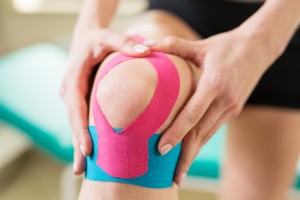 If you are active in the sports world – playing or watching, you are probably familiar with seeing different kinds of tape around various body parts of athletes. This is becoming a quite common form of healing and pain relief for those who indulge in physical activities and sports games around the world. The method is called Kinesio taping and it is used for different reasons, but was designed for a single motive – relief. As luck would have it, Sunbury chiropractor has the professionals you need to help you with questions or concerns you may have about this type of pain soother for your muscles and joints.
If you are active in the sports world – playing or watching, you are probably familiar with seeing different kinds of tape around various body parts of athletes. This is becoming a quite common form of healing and pain relief for those who indulge in physical activities and sports games around the world. The method is called Kinesio taping and it is used for different reasons, but was designed for a single motive – relief. As luck would have it, Sunbury chiropractor has the professionals you need to help you with questions or concerns you may have about this type of pain soother for your muscles and joints.
How Is Tape Going to Help my Pain?
It may sound strange, but this tape can definitely soothe your aches and pains. The tape is thin and elastic-like so it feels and acts just like your skin does once you put it on. It can get wet from showering, swimming and sweat and dry off with a towel just like your skin does. Kinesio tape can be left on for up to 5 days in a row and you will never even know it’s there! The length of time you can keep it on helps immensely to relieve your pain and allow your joint and muscle inflammation to be corrected, quickly. The tape should be placed directly over the area that you are feeling pain in; it acts as like a vacuum to your underlying muscles and causes the inflammation to subside.
What Is It Going to Do for Me?
There are some temporary alternatives to Kinesio taping that will help the pain go away for a little while, however, this tape should be your go-to for prolonged relief pain medication may help for a short period of time, but because you can use this tape for up to 5 days in a row without re-applying or adjusting it, you are guaranteed those 5 full days of the tape working its magic. Because the material that the tape is made from is so similar to your skin, it also breathes and moves just the way your skin would. Because of this, you won’t have to do any adjustments or be concerned about the tape moving out of place or sliding around at all.
Conclusion
The effects of Kinesio taping can be seen and felt within a matter of hours after it is applied. Your best bet is to try and have a professional apply it for you to make sure it is getting placed in the precise location for maximum relief. Once you have this method done to your aching joints and muscles, there is no way you will resort to any other alternative, again. It is effective, it is healthy and safe for your body and it will give you the strength and confidence you need to get back to your game, faster. We have 2 different locations with professionals who are ready and waiting for you to ask for their help. Give us call in Roxburgh Park at (03) 9303 9952 or in Sunbury at (03) 9746 3977. Begin your pain free life, today!
National Pain Week – Chronic Back Pain
 Health experts define chronic pain as the pain that lasts for more than three to six months or beyond. The most common chronic pain is back pain which is typically felt in the lower back area. Chronic back pain can cause soreness, stiffness, and inflammation and the pain may range from mild to severe or from dull ache to sharp pain. People with chronic back pain often find the pain interfering with their daily activities which make them feel frustrated and sometimes even depressed. Scarborough Chiropractor Dr. Adam Rocchi explains that due to the pain, a feeling of helplessness sets in and the condition can lead to poor sleeping pattern and impact the quality of life.
Health experts define chronic pain as the pain that lasts for more than three to six months or beyond. The most common chronic pain is back pain which is typically felt in the lower back area. Chronic back pain can cause soreness, stiffness, and inflammation and the pain may range from mild to severe or from dull ache to sharp pain. People with chronic back pain often find the pain interfering with their daily activities which make them feel frustrated and sometimes even depressed. Scarborough Chiropractor Dr. Adam Rocchi explains that due to the pain, a feeling of helplessness sets in and the condition can lead to poor sleeping pattern and impact the quality of life.
Causes of back problems
Identifying the actual cause of back pain requires a detailed diagnosis. However, back pain usually occurs due to direct injuries such as sprain or strain and sometimes medical conditions like sciatica or a slipped disc. Chronic back problems can also be an outcome of certain lifestyle choices. People with poor sitting posture or those who are inactive are at a greater risk of experiencing a back problem since these conditions cause strain on the spine.
Types of Back Pain
It is important to understand the major types of back pain as it will be helpful when you consider any treatment option with Scarborough Chiropractor Dr. Adam Rocchi.
- Nociceptive Pain– Our body has a type of sensors known as nociceptors which alerts us on an injury to a muscle, soft tissues like ligaments and tendons, joints, bones, skin or any other organ. The signals are relayed to the brain through our nervous system which gives us the sensation of pain. Scarborough Chiropractor Adam Rocchiexplains that this type of pain can be usually described as soreness, deep aching or throbbing. Some common examples are pain in the back after an injury or accident, pain after back surgery, and arthritis. The nociceptive pain usually goes away as the injury heals.
- Neuropathy– A neuropathic pain is a pain that is caused by an injury or damage to the nerve tissue. An injury or infection in the body can result in nerve damage. Once the damage occurs, the nerves keep on sending pain signals even after the person has recovered from the original injury. Sciatica is a condition of neuropathic pain associated with the back. Sciatica is known to occur when something presses the lower back region against the nerve root thus triggering the numbness and discomfort all along the sciatic nerve that stretches from buttocks to the feet. Some other examples of neuropathic pain include pain that goes down from spine to the arm region and the pain which persists post back surgery.
The above two categories of pain can be further classified into chronic and acute pain. In the case of acute pain, the severity depends on the amount of tissue damage. Our body has the protective reflex to prevent such pain like pulling back your hand on touching some sharp object. The acute pain goes away as soon as the underlying cause is cured. Whereas in the case of chronic pains our body does not have a protective reflex. The nerves continue to transmit pain signals even after tissue damage has repaired.
Chronic pains can take a toll on your daily life and hence it is essential that you consult Scarborough Chiropractor Dr. Adam Rocchifor further treatment.So, call the practice now on (08) 61508785 Scarborough or (08) 61508783 Mount Pleasant to arrange an appointment
The three vital steps in safeguarding the health of your brain
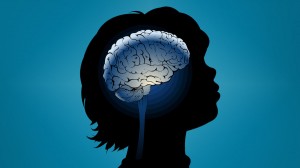 Modern health science has enabled man to live longer by fighting most diseases that lead to high mortality. Unfortunately, there is a remarkable rise in degenerative brain disorders. The progress that is being made in brain research, ways to prevent, diagnose, and treat degenerative brain ailments and other problems affecting the mental health is discussed and presented at Brain Awareness Week (BAW). BAW happens every year. This year’s workshop took place between the 13th and 19th of March.
Modern health science has enabled man to live longer by fighting most diseases that lead to high mortality. Unfortunately, there is a remarkable rise in degenerative brain disorders. The progress that is being made in brain research, ways to prevent, diagnose, and treat degenerative brain ailments and other problems affecting the mental health is discussed and presented at Brain Awareness Week (BAW). BAW happens every year. This year’s workshop took place between the 13th and 19th of March.
Johan C Jeronimus, Ealing Chiropractor, the Neuroworks Chiropractic Clinic’s DC DACNB has put together three easy steps of taking care of the brain and ensuring its health throughout our lifetime in line with this year’s BAW.
Exercise
Exercise boosts thinking and memory. Direct outcomes from exercise include reduced insulin resistance, inflammation, and body’s stimulation to release the growth factors (chemicals). These factors are beneficial to the health of the brain cells. They also influence the likelihood of new brain cells surviving and the increase in the numbers. It also affects ways new blood vessels grow in the brain.
Reducing anxiety and stress in addition to improving sleep and your overall mood brings about indirect benefits to brain health. These areas are causes or contributing factors to cognitive impairment.
To help you keep motivated and stick to the goals, join a class, hire a personal trainer or partner with a gym buddy. Moreover, protect the brain with a headgear when playing or working out. Get checked up for any head injury.
Brain nourishment
You can keep both your body and the brain healthy deep into old age by eating healthy, moderating your alcohol intake and taking nutrition supplements to deal with the nutritional shortfall.
- Antioxidants like blueberries protects the brain from oxidative stress
- Deep-water fish like wild salmon is rich in Omega-3, which are vital to normal and healthy brain function.
- Get Vitamin E from such foods as nuts. An ounce of the nutrient reduces cognitive decline brought by age.
- Monounsaturated fats such as in avocados lower the blood pressure helps promote the healthy flow of the blood
- Whole grains have dietary fiber that lowers the risk associated with heart disease. This, in turn, ensures adequate blood supply to the brain.
- Pulses and beans are vital in stabilizing blood sugar. The glucose is the fuel that keeps the body running. Stable glucose ensures the brain has the energy it needs.
- A modest caffeine intake improves mood, memory, and focus. Take two to three cups of freshly brewed tea or coffee.
- Dark chocolate is an antioxidant that helps improve mood and concentration.
Sleep
Sufficient sleep that is of good quality is beneficial to the brain and also our moods, anxiety levels, and stress. Our brain’s transmitters are refueled when asleep. They include Serotonin, which helps reduce stress and anxiety as we go through daily activities.
Sleep deprivation leads to negative emotions, thoughts, and likelihood of a depression
Sleep also flushes out toxins that accumulate when we are awake.
